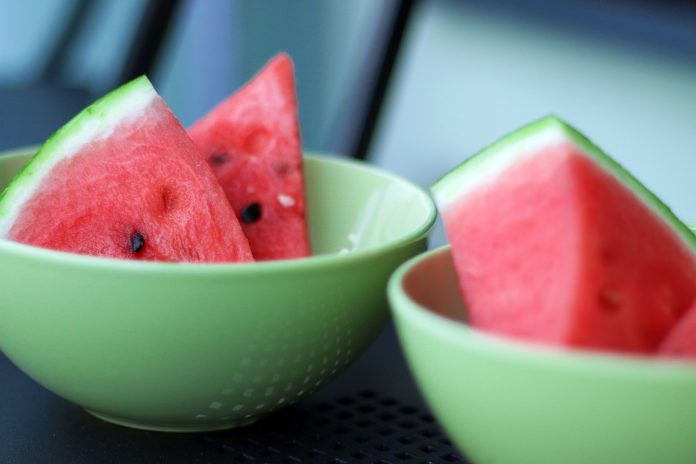Melons have always been one of my favorite summer treats. Not only are they juicy and nutritious, but if you pick the right ones they are sweet and delicious, as well.
Melons are packed full of vitamins. Cantaloupes are rich in vitamins A and C. Honeydew has plenty of vitamin C, potassium and B vitamins. Watermelon provides vitamins A and C and is 93 percent water — perfect for staying hydrated on a hot day.
Additionally, red watermelon is a good source of lycopene — the phytonutrient that gives watermelon its color. According to an Ohio State University Extension Ohioline fact sheet, Lycopene appears to protect the body against a growing list of cancers, including prostate cancer, breast cancer, endometrial cancer, lung cancer and colorectal cancers. Lycopene also helps protect cells from damage associated with heart disease as well.
With plenty of good reasons to indulge, it’s beneficial to learn to pick the best melons available.
Melon picking tips
Cantaloupe
- Make sure the melon has no bruises or discolorations.
- Look for a smooth, slightly sunken and well-rounded stem end.
- It should have a sweet, musky aroma.
- Ripe melons have an evenly distributed corky web-pattern that is a buff or light tan color on a green, yellow or gray background.
Honeydew
- Ripe honeydew has a creamy yellow color when picked. If the melon is green when its picked, it won’t ripen.
- Its skin should feel velvety and the blossom end should feel slightly springy.
Watermelon
- The area where the watermelon has been resting on the ground should be a pale yellow or cream. A green or white spot means it is not quite ripe.
- Gently, scratch the surface of the watermelon’s rind with your thumbnail. The outer layer should slips back with little resistance showing the green-white under the rind if the watermelon is ripe. If the scratch leaves a darker depressed line the melon isn’t ripe yet.
- Pick a melon with a smooth surface, dull sheen and well-rounded ends.
- Make sure your melon doesn’t have bruises, cuts or dents.
- Lift your watermelon to make sure it’s not heavy for its size. Most of its weight is made up of water.
- If you are choosing pre-cut watermelons, select ones with more red flesh and less white rind. It’s an indicator that the melon was ripe when it was cut.
Produce safety
Always wash your produce before preparing it for consumption. Melons grow on the ground and can collect bacteria. Peeling or cutting unwashed produce can transfer dirt and bacteria from the rind to the flesh. Produce with a firm outer layer, like melons, should be scrubbed with a produce brush and dried off with a clean paper towel before peeling or cutting into them.
Once you’ve selected and prepared the perfect melon, kick back, relax and enjoy your treat!

















